How To Declutter Your Home: Amazing Room Transformations

It’s easier than you think to clear the clutter and turn your life around.
Most of us have a clutter hotspot in the home. It may be just a drawer or cupboard, but it could be a garage packed with stuff we don’t use or need but think we’ll get around to using one day.
Perhaps it’s family memorabilia or kids’ belongings you don’t want to part with. It may be hobby gear, spares or just-in-case purchases.
Add all this to the consumerist age we live in and it’s easy to imagine how it can all get out of hand.
For Fran and Dave Keith, life in their home in Mt Kuring-gai, Sydney, was becoming intolerable due to piles of items taking up the available space.
With a five-year-old daughter now adopting their habits as well, the couple knew it was time to seek some help in getting organised.
Luckily, Brisbane native and now LA-based Peter Walsh, known to many as Oprah’s chief organiser in residence, was on hand. Working with the team from Channel Ten’s The Living Room, he set out to transform the family’s home, and their lives, in just two days.
Full to bursting
The Keiths had been accumulating masses of belongings for years, but when Fran’s grandmother died and left them her house, it tipped the scales.
‘There was already an excess of stuff, and rather than sort things at the time, they got put on shelves, in cupboards or in the garage,’ says Peter.
Life consisted of Dave trying to persuade Fran to do something, and dissatisfaction grew.
‘Here is a loving couple who are being controlled by inanimate things. This is the power of over-accumulation,’ explains Peter.
‘It starts to make you feel uncomfortable, overwhelmed and suffocated. The language we use about it metaphorically tells us how we feel.’
Previous attempts to get it under control had fallen short. Occasionally, things were sorted and sifted, restacked and reallocated, but nothing improved. At one point, the garage was even converted to a work centre for all of Fran’s craft supplies.
But within weeks, it had been taken over with other items, making it just another collection of boxes and piles.
‘There is a real reason that tackling things this way just doesn’t work. The answer may sound counterintuitive, but it really is the key,’ says Peter.
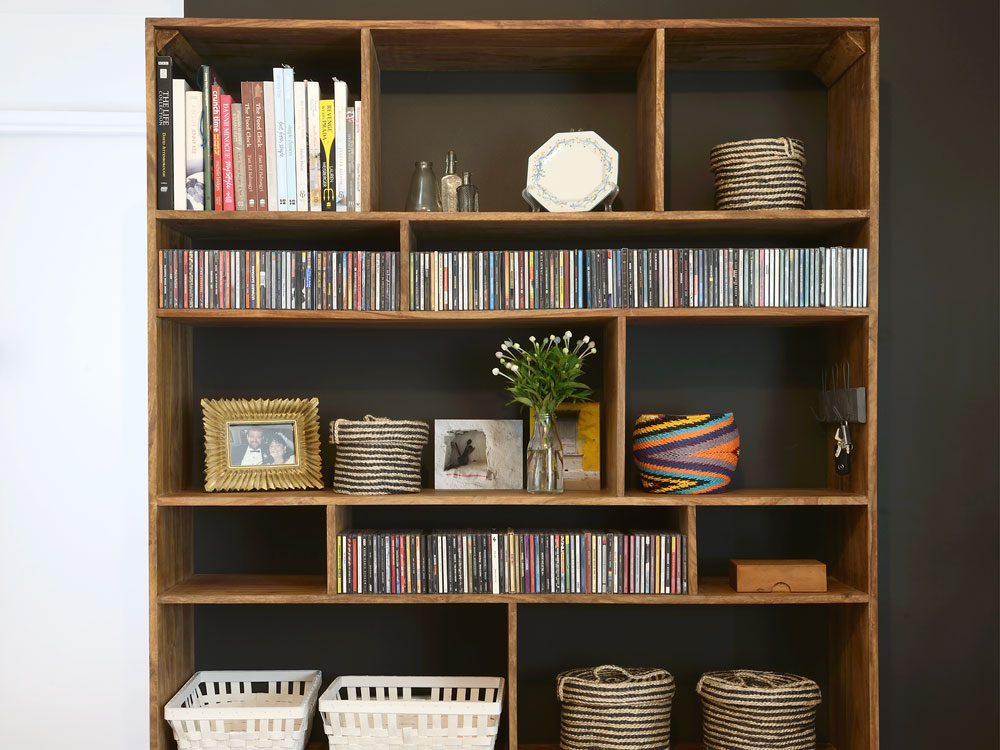
Vertical storage utilises wall space and keeps the floors and surfaces clear
It’s not about the stuff
Peter has been organising people for the past 15 years and has seen it all.
‘But whenever there’s a problem with organisation or clutter, it’s never, ever, about the stuff. The moment the focus is on the stuff, it becomes a tussle, and then it’s about who’ll win, and not what will work best,’ he says.
This concept took Fran and Dave completely by surprise.
‘It’s often a new way of looking at things. And in all my years of experience, once I put this to people, they relax, and that’s exactly when I know we can get started,’ says Peter.
Getting started for Peter means stepping away from the space.
‘Before even setting foot in the house, I speak to the people. The work I do seeks to tell the person’s or family’s story through their stuff.
‘I offer to help in any way I can and, most importantly, act as a mirror for them to see how they have been living and how far away from their real wishes and desires this is,’ says Peter.
It can take a bit of practice, but Peter’s initial approach is to focus on the way the home feels now and how the clients want it to feel from this point onwards.
‘It’s all about the underlying motivations and the emotional connections to what we have,’ he says.
‘Taking the power away from the physical stuff and talking about the values people want to embody in the space in which they live begins to form the vision, for each room and for the house overall.
‘Fran and Dave came up with restful, tranquil and comfortable for the master bedroom, and warm, inviting and family oriented for the lounge room,’ says Peter.
‘Forming a vision then leads to agreeing on a function, which gives rise to zoning and then, importantly, limitations.
‘These four steps are the basis of a straightforward, simple plan that frees the space and, ultimately, yourself.’
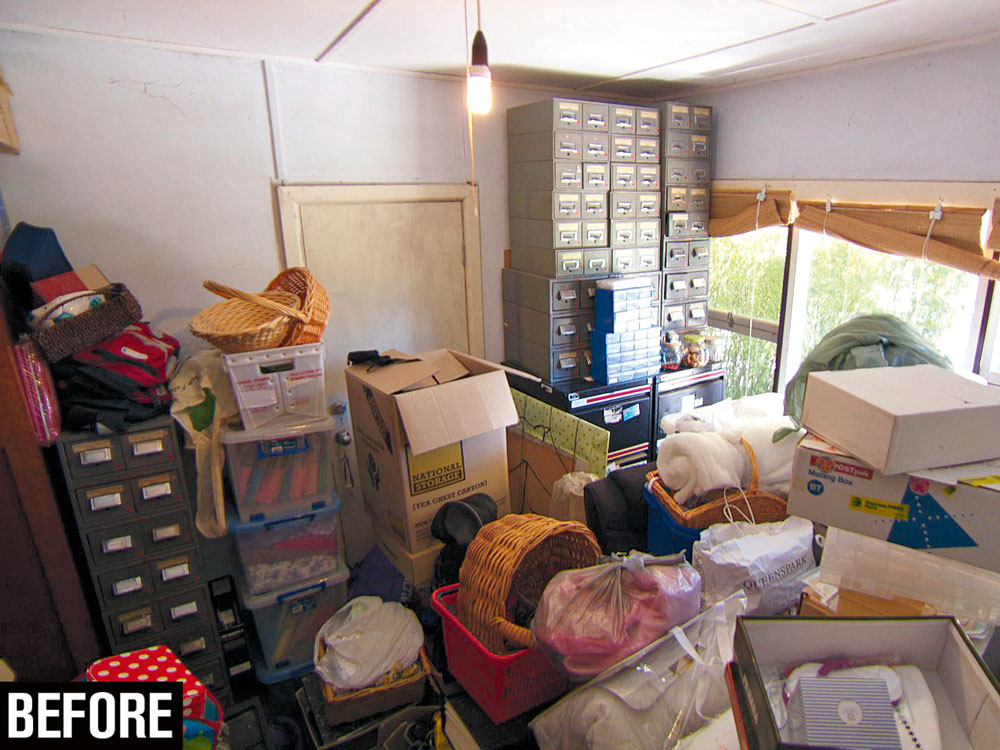
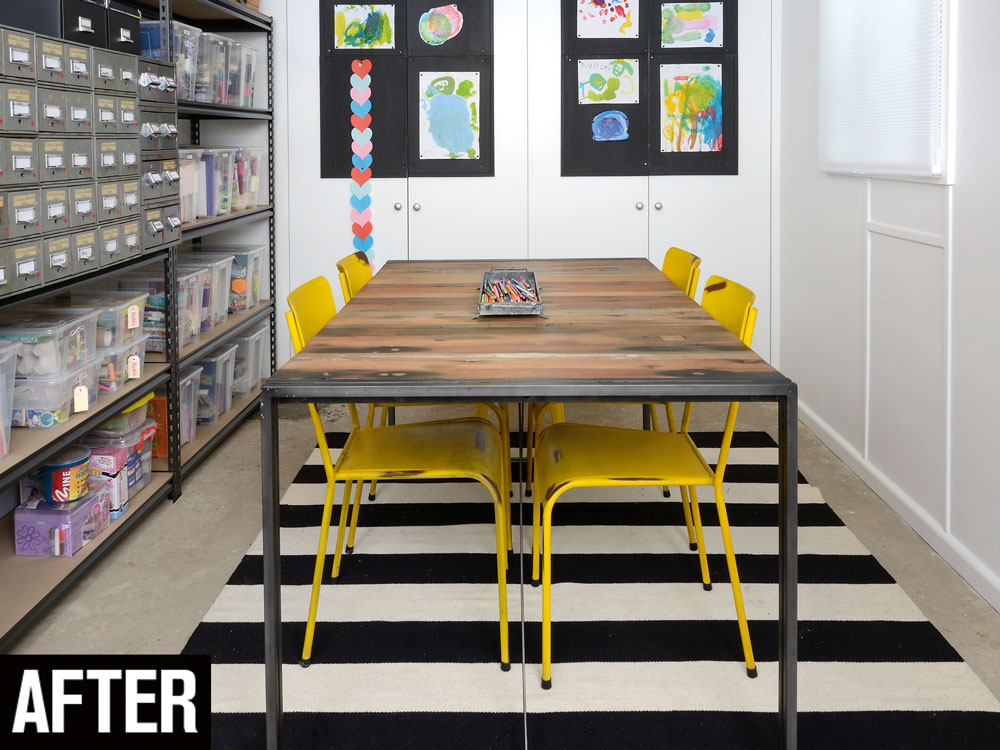 The cluttered room pictured above was turned into a designated craft room, complete with work table, to keep everything in its place
The cluttered room pictured above was turned into a designated craft room, complete with work table, to keep everything in its place
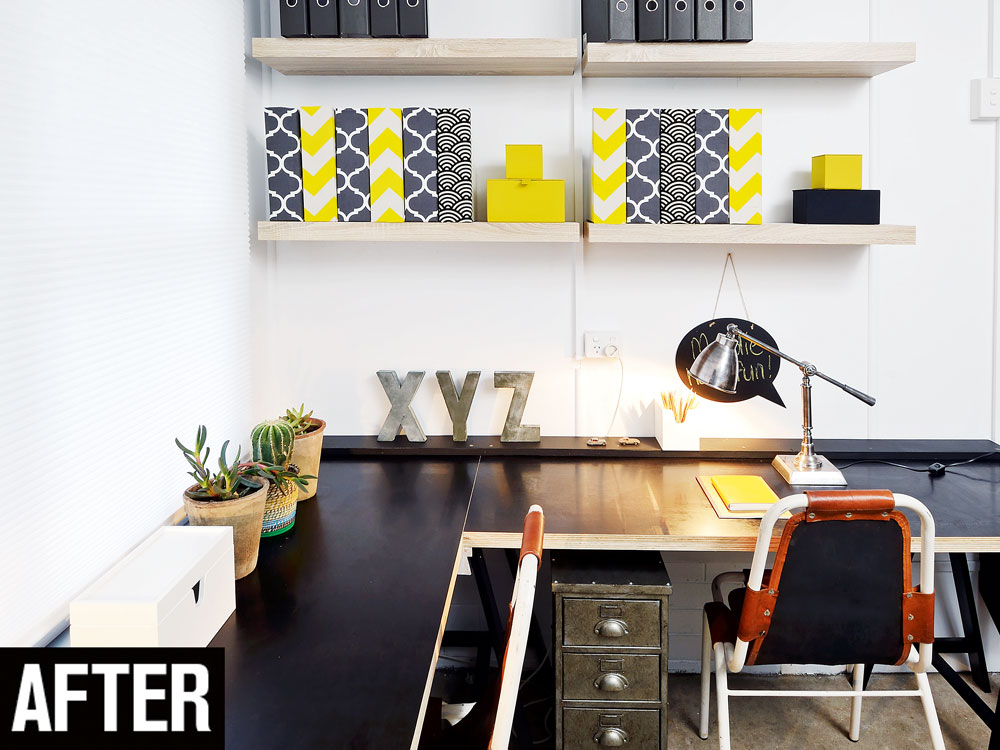
Originally in the bedroom, the office now occupies a corner of the craft room
Clutter categories
Peter divides clutter into two camps. ‘The first is memory clutter, which is connected to people, places and events. With memory clutter, people are terrified that if they let go of the objects, they’ll also lose the memory.
‘The other is I-may-need-it-one-day clutter, which is kept in anticipation of a raft of imagined futures. Pointing out these differences starts the sorting.’
Beginning to pack things is where resistance inevitably starts to creep in. Fran was mostly concerned with the memory items, but Peter had a plan.
‘There are always moments when doubt surfaces, and it’s almost always about memory items, often things that haven’t seen the light of day for years,’ he says.
‘The trick is to pick four or five treasures, treat them with honour and display them. The power is taken away from all the other stuff, so it becomes easier to begin to let go,’ says Peter.
Within a day, everything in the house had been cleared and there were 300 boxes on the lawn. From here, it’s a process of elimination.
‘There’s an initial purge process, which is donating or throwing away anything that’s no longer needed.
‘The next step is to sort like with like and decide how much space should be allocated to each. Look at what you own and use it to reorganise your stuff.
‘Fran and Dave had a fantastic collection of old library filing drawers, which turned out to be perfect for all Fran’s beads and crafting materials.’
When the time comes to start putting things back in the house, a few simple rules work for any space.
‘It’s important to use vertical space. Tall shelving, pegboards, hooks and hangers. And keep flat surfaces clear,’ says Peter.
‘Use transparent containers or totes to keep like things together with limits, and higher shelves or deep storage for seldom-used items.’
Four steps to success
Follow this simple plan to get more organised in your home.
1. STEP OUTSIDE the space and take your mind off the stuff. Establish three key feeling words for each space. This is the vision.
2. DECIDE the primary function for each room and ensure the family agrees. Refer to the vision.
3. CREATE ZONES for each function, two per room, or three if the space is big with distinct areas. Refer to the vision.
4. SET LIMITS within zones, like one shelf for DVDs, so you know when it’s time to get rid of some.
Go through each room and only let in what fits the vision and function
Transformation complete
By the end of day two, Fran and Dave’s house was practically unrecognisable. They had managed to get rid of masses of stuff and completely reconfigured the rest.
Each room was now aligned with the vision they both had.
‘By the time we’d finished, Fran and Dave looked like totally different people. When we showed them around at the final reveal, they were so overcome with emotion, they were literally speechless,’ says Peter.
‘This why I love this work so much. Instinctively, we know that too much stuff robs us of our ability to live to the fullest in the space we have,’ he says.
‘Too much stuff gives you a crazy preoccupation with the past and anxiety about the future, so you fail to live in
a mindful, present way.
‘Once you understand your motivations and are in the now, you just can’t fail to be happy.’
TIP If you’d like professional help with decluttering, Peter Walsh recommends The Australasian Association of Professional Organisers.
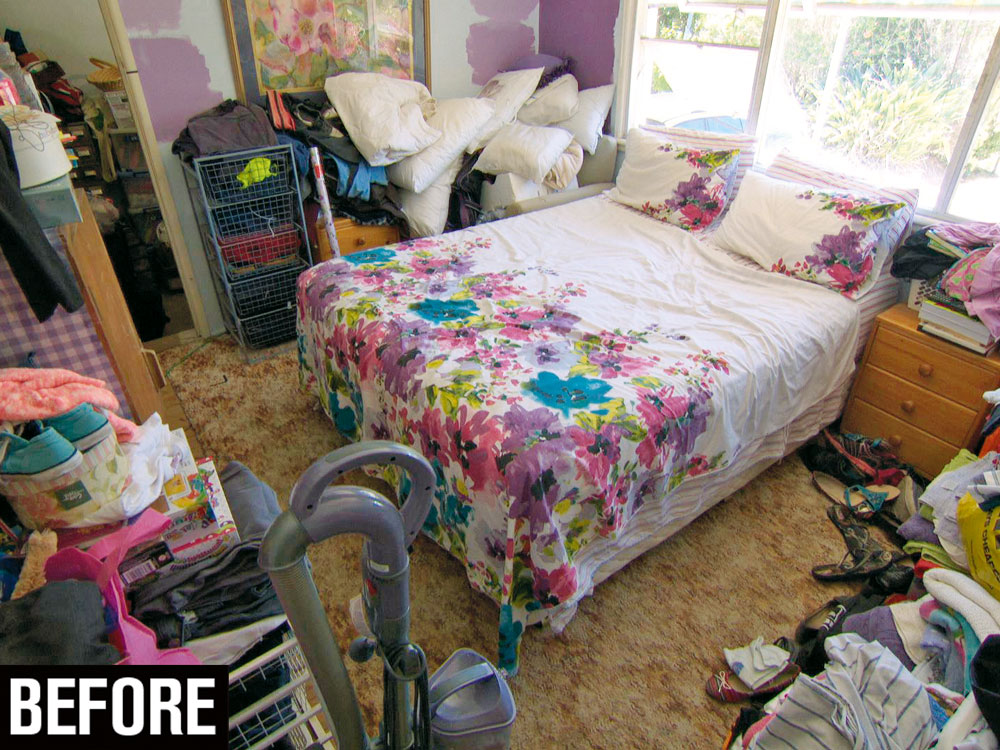
This bedroom lacked proper storage and was thus full of clutter
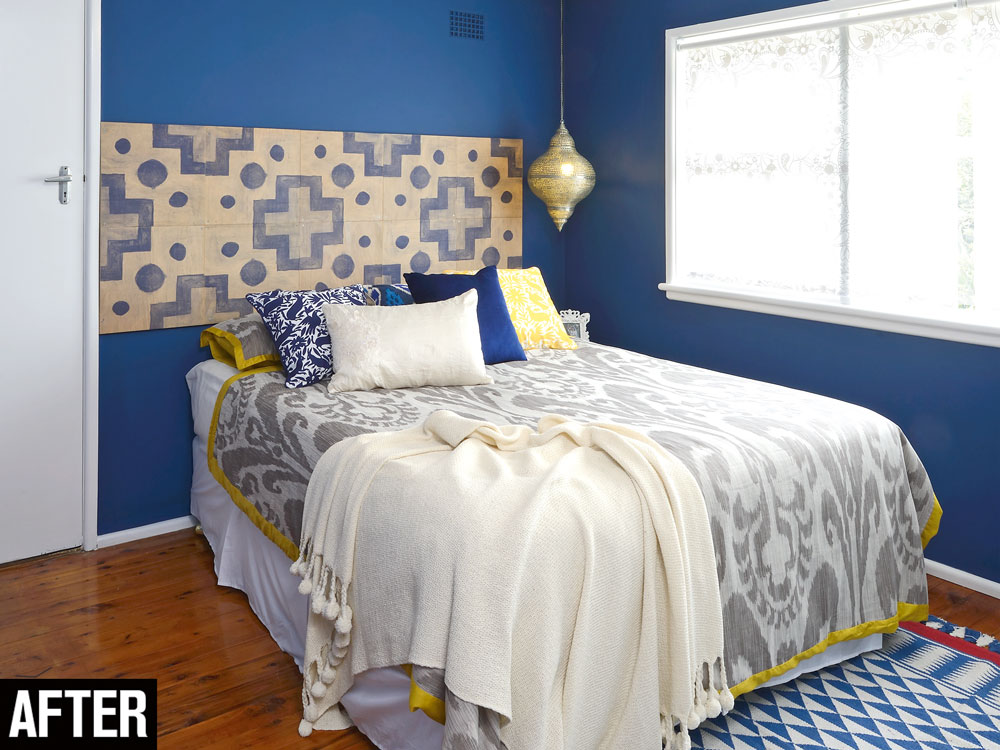
Relaxing blues and zero clutter turned the above bedroom into a cosy retreat
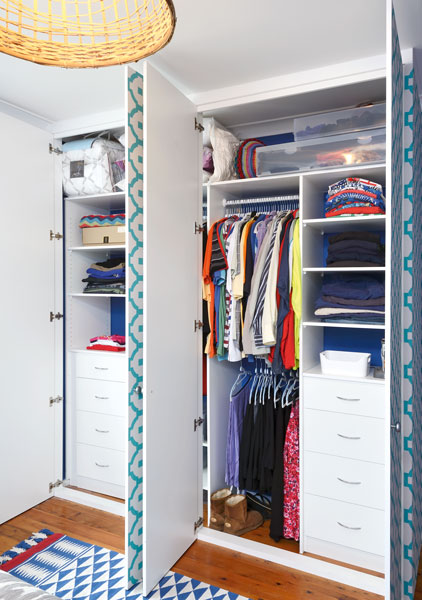
Built-in wardrobes were installed to house a range of belongings
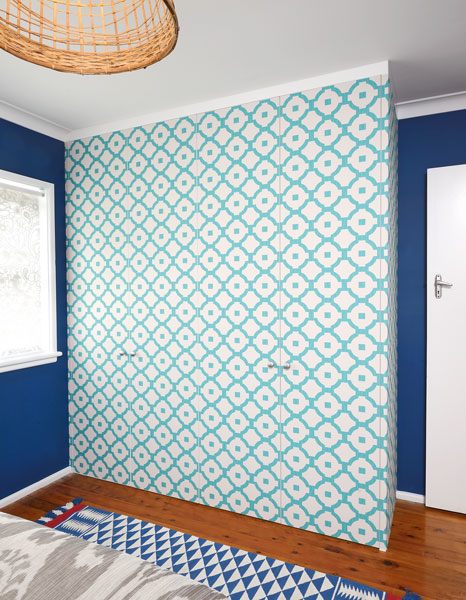
This article originally appeared in the July 2014 edition of Handyman magazine








